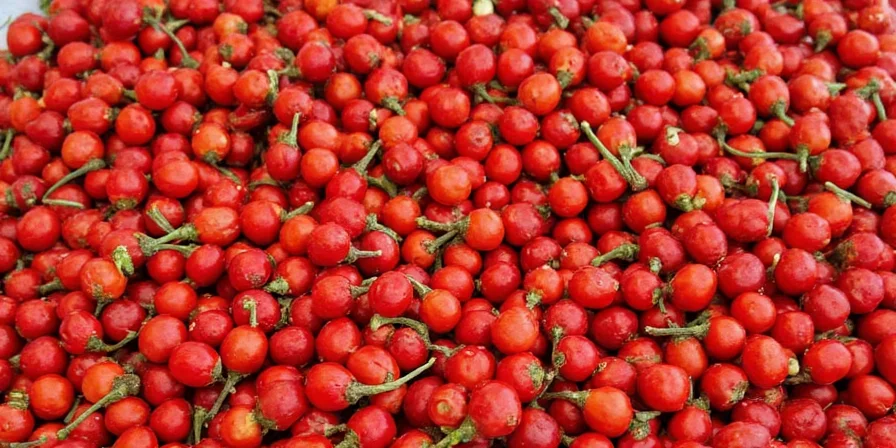The Spicy Secret of Tianjin Pepper: From Local Treasure to Global Flavor Champion
If you thought spice was all about jalapeños, habaneros, or ghost peppers — it’s time for a plot twist. Meet the Tianjin Pepper, a hidden gem from northern China that’s quietly revolutionizing flavor profiles across the globe. Forget everything you thought you knew about chili heat — this one’s got layers. And we’re not just talking about Scoville units.
Table of Contents
- What Is Tianjin Pepper?
- Flavor Profile & Heat Level
- Cultural Significance in Chinese Cuisine
- Cooking with Tianjin Pepper: Tips and Tricks
- Tianjin Pepper on the Global Culinary Stage
- Grow Your Own Tianjin Pepper at Home
- Where to Buy & How to Store It
- Tianjin vs. Other Chilies: A Spicy Showdown
- Final Thoughts
What Is Tianjin Pepper?
Beyond its name, which suggests origin in the bustling port city of Tianjin, the Tianjin pepper (sometimes called Tianjin No. 2) is actually more commonly cultivated in Hebei Province. It's a variety of Capsicum annuum, typically medium in size and tapering to a pointy tip. Its color ranges from bright green when unripe to deep red when mature — and yes, the heat level increases with ripeness.
Flavor Profile & Heat Level
Tianjin pepper strikes a beautiful balance between earthy depth and sharp heat. Think of it as the Goldilocks of chilies: not too fiery, not too mild, but just right for most palates.
- Scoville Units: 10,000–30,000 SHU
- Taste Notes: Slightly smoky, nutty undertones with floral highlights
- Mouthfeel: Clean burn, no lingering numbness like Sichuan peppercorn
Cultural Significance in Chinese Cuisine
In northern China, Tianjin pepper isn’t just a condiment — it’s a lifestyle. Whether pickled, dried, or stir-fried fresh, it plays a starring role in dishes like:
- Pockmarked Mother’s Chili Eggplant
- Dry-Fried Tianjin Pepper Chicken
- Sizzling Tianjin Pepper Tofu Skillet
Historically, these peppers were sun-dried and stored in clay jars to last through winter. Some families still use them in traditional remedies for colds and digestive issues due to their warming properties.
Cooking with Tianjin Pepper: Tips and Tricks
If you're new to cooking with Tianjin pepper, here are some pro tips to get the most out of this flavorful firestarter:
🔥 Spice Control
- Less is more: The heat builds gradually, so don’t overdo it.
- To seed or not to seed: For milder heat, remove seeds before cooking.
🌶️ Cooking Methods
| Cooking Method | Best Use | Flavor Outcome |
|---|---|---|
| Stir-frying | Vegetables, meats | Intense, punchy flavor |
| Steaming | Dumplings, buns | Delicate spice, subtle aroma |
| Pickling | Condiments, side dishes | Tangy, fermented kick |
| Drying | Chili oil, soups | Deep, smoky warmth |
🌿 Pairing Suggestions
- Meats: Pork belly, lamb chops, chicken thighs
- Veggies: Eggplant, green beans, potatoes
- Spice Friends: Garlic, ginger, black vinegar, star anise
Tianjin Pepper on the Global Culinary Stage
As global cuisine continues to evolve, chefs around the world are discovering the versatility of Tianjin pepper. From street food fusion trucks in Mexico City to Michelin-starred restaurants in New York, this chili is making waves.
- New York: Upscale dumpling houses infuse soy glazes with Tianjin pepper paste.
- Mexico: Used in salsas alongside habanero for a layered heat profile.
- Italy: Added to marinara sauces for a unique twist on arrabbiata pasta.
Grow Your Own Tianjin Pepper at Home
Want to bring the magic of Tianjin pepper into your own kitchen? It's easier than you think!
- Climate: Prefers warm summers and moderate humidity
- Soil: Well-drained loamy soil with pH 6.5–7.0
- Sunlight: At least 6–8 hours daily
- Watering: Regular, especially during flowering/fruiting stage
Harvest Tips
- Green peppers can be harvested early for milder spice.
- For maximum flavor and heat, wait until they turn bright red.
- Use pruning shears — pulling can damage the plant.
Where to Buy & How to Store It
You might not find fresh Tianjin peppers at your local grocery store (yet), but specialty Asian markets and online spice retailers often carry them in various forms:
- Fresh whole peppers
- Dried versions
- Powdered form
- Chili oil infused with Tianjin pepper
Storage Guide
| Form | Storage Method | Shelf Life |
|---|---|---|
| Fresh | Refrigerator crisper drawer | Up to 2 weeks |
| Dried | Airtight container in cool, dark place | Up to 1 year |
| Oil-infused | Sealed bottle away from light | 6 months |
Tianjin vs. Other Chilies: A Spicy Showdown
How does our northern Chinese contender stack up against other global hotshots?
| Pepper | Heat (SHU) | Flavor Notes | Common Uses |
|---|---|---|---|
| Tianjin Pepper | 10,000–30,000 | Nutty, floral, smoky | Chinese stir-fries, chili oils |
| Jalapeño | 2,500–8,000 | Grassy, crisp | Mexican tacos, nachos |
| Habanero | 100,000–350,000 | Fruity, tropical | Hot sauces, Caribbean dishes |
| Thai Bird’s Eye | 50,000–100,000 | Sharp, pungent | Pad Thai, curries |
Final Thoughts: Why Tianjin Pepper Deserves a Spot in Your Spice Rack
Whether you're a home cook experimenting with bold flavors or a professional chef looking to impress with something unexpected, Tianjin pepper offers a unique combination of heat, complexity, and cultural richness. It’s not just a chili — it’s a passport to global flavor adventures.
From its humble roots in Hebei Province to its rising status on the international stage, the Tianjin pepper proves that sometimes, the best spices aren't the loudest — they're the ones that linger long after the first bite.

🌟 Quick Recap
- Tianjin pepper brings balanced heat and complex flavor.
- Ideal for both everyday cooking and gourmet experimentation.
- Easy to grow, easy to store, hard to forget.










 浙公网安备
33010002000092号
浙公网安备
33010002000092号 浙B2-20120091-4
浙B2-20120091-4